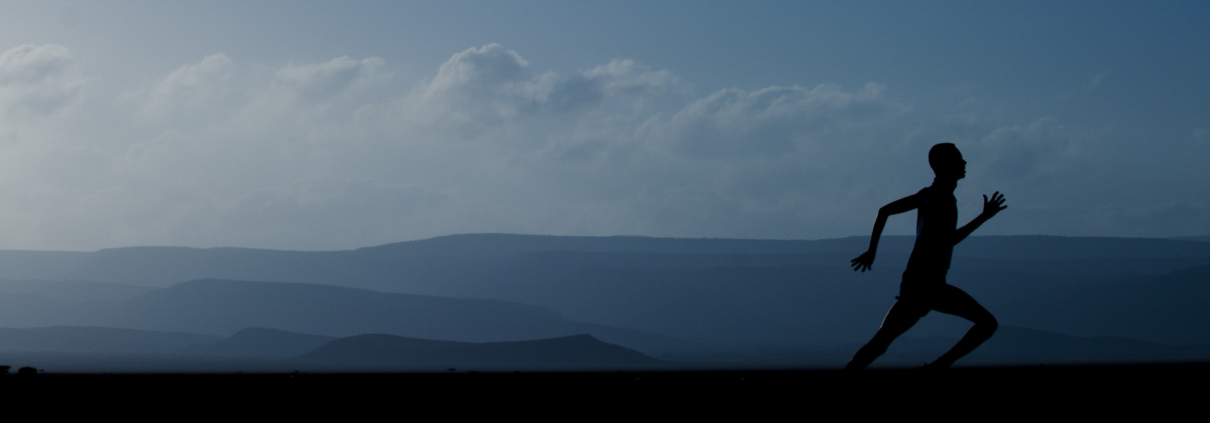The Truth Behind the ‘Runner’s High’
When Michael McDermott started running regularly about 20 years ago, it was a challenge to get to one mile and then to two miles. But then, he said, “Something kind of clicked after I got to two miles, where it got really easy to get from two to five miles.” In those early days, he remembers that after about 10 minutes or so, he would feel “just a higher level of energy. It felt like for a while the physical limitations were not as bad and I could run faster during that time.”
Music would often kick it up a notch: “Some song would come on that I really liked, and that would punch it up and make me feel even more euphoric,” McDermott said.
That feeling of euphoria is known as the “runner’s high.” Some chase it. Some never experience it. Some, like McDermott, grasp it early in their exercise journey. A runner’s high makes the exercise feel effortless; pain and anxiety decrease or disappear. An individual may even feel extremely happy, that feeling of “euphoria.”
McDermott, now 48, runs nearly every morning near his home in Warwick, Rhode Island. He ran 1,750 miles in 2024. Although he no longer feels that burst of energy as often, he knows that running simply makes him feel better. He’s more alert and focused, and his best creative work ideas usually come to him during a run.
The Endorphin Myth
For years, researchers and athletes alike thought that a runner’s high came from an increased level of endorphins, which are hormones in your body that relieve stress and pain. However, newer research now shows that it’s not endorphins, but more likely endocannabinoids that cause a runner’s high.
“Endorphins actually don’t cross the blood-brain barrier,” explained Angie Ridgel, PhD, “but the endocannabinoids can. And there are a lot of receptors for those molecules within the brain—and within the brain areas that would elicit these euphoric responses.”
Some research studies have blocked the ability for endorphins to work and people still had feelings of euphoria during or after exercise, said Dr. Ridgel, whose PhD is in biomedical sciences. She is a professor in the Exercise State and Exercise Physiology Department at Kent State University in Ohio and co-owner of Stelleri Performance Training, a coaching program for women 40 and older who compete in triathlons, cycling or running.
Our body’s endocannabinoid system is a critically important network of chemical signals and cellular receptors that act like “traffic cops,” according to Harvard Health. The system regulates things in our body, adjusting various systems like our hunger or temperature.
The endocannabinoid system was only discovered in the 1990s—a few decades after the term “runner’s high” was first used during the recreational running boom in the 1970s. The term “endocannabinoid” may sound familiar because of marijuana: The chemical THC (tetrahydrocannabinol) in marijuana is a cannabinoid, and it’s THC that makes people feel “high” because it disrupts the body’s endocannabinoid system.
The Search for the Runner’s High
Despite the name, people can feel a runner’s high in other sports too. It typically happens during vigorous aerobic activity in sports like cycling, swimming, hiking or rowing. The key is “vigorous” activity, not simply an easy hike or a leisurely swim. And it doesn’t happen every time. In fact, some athletes may never experience that euphoria.
Despite research supporting endocannabinoids as the cause, little is known about how or why a person may feel a runner’s high. In 2022, German psychiatrist Johannes Fuss, MD, and colleagues published a review article, which looked at all the previous studies that measured humans’ endocannabinoid levels after exercise. Fourteen of 17 studies showed that after one session of physical exercise (typically 20-60 minutes), people experienced an increase in endocannabinoids.
Much less is known about the effects of long-term exercise—a long one-day session or weeks or years over time. There has been concern that too much running can have the opposite effect of a runner’s high. In fact, four studies in the review article showed that after longer endurance exercise of at least 12 weeks, individuals’ endocannabinoid levels actually decreased.
Scientists have struggled with how to prove the connection between endocannabinoids and exercise because it’s hard to measure the changes. Most studies so far have measured endocannabinoid blood levels after exercise, but these “peripheral” levels don’t necessarily represent what is happening in the brain. Some studies have tried to measure the feeling of euphoria by giving people questionnaires after exercise about their mood.
One interesting study showed that women new to a spin class did not have an increase in endocannabinoid blood levels, but the same women saw an increase after singing in their regular choir. This suggests that a positive feeling needs to exist for those blood levels to increase, but, again, much more research is needed.
The Benefits of Exercise
Dr. Ridgel has felt the “runner’s high” when she’s trail running or gravel cycling. She has noticed that she’s more attuned to nature in those situations. On the flip side, she hasn’t experienced it in more stressful situations, like during competition, riding a bike on the road, or leading a group bike ride where she’s responsible for the other cyclists.
Euphoria or not, regular physical activity has numerous health benefits: It can decrease blood pressure and cholesterol levels, help you reach or maintain a healthy weight, strengthen bones and muscles, regulate your blood sugar to reduce your risk of type 2 diabetes, improve sleep and so much more.
Whether you ever feel that euphoric runner’s high or not, research confirms that exercise makes people feel good and can help decrease depression and anxiety, So, feeling stressed, anxious, uneasy or dreading an upcoming meeting? Maybe it’s time to start a 5K program. Or dust off your old bicycle or head out for a vigorous hike in the woods or mountains. Maybe you too will find that elusive runner’s high.



